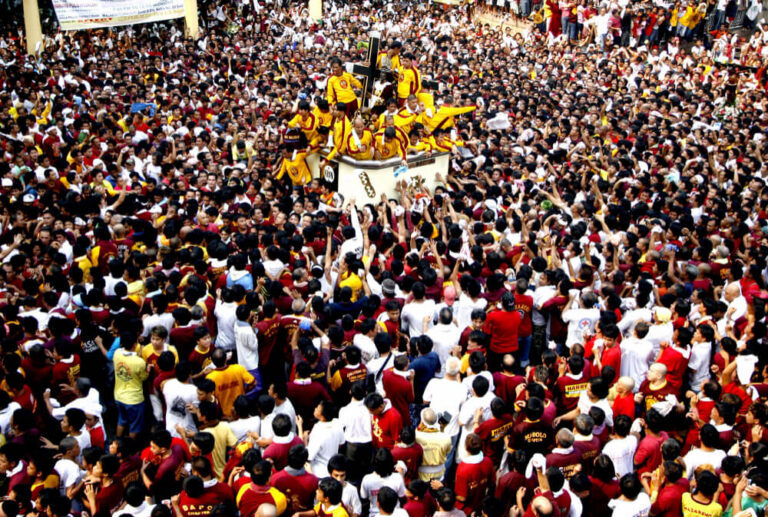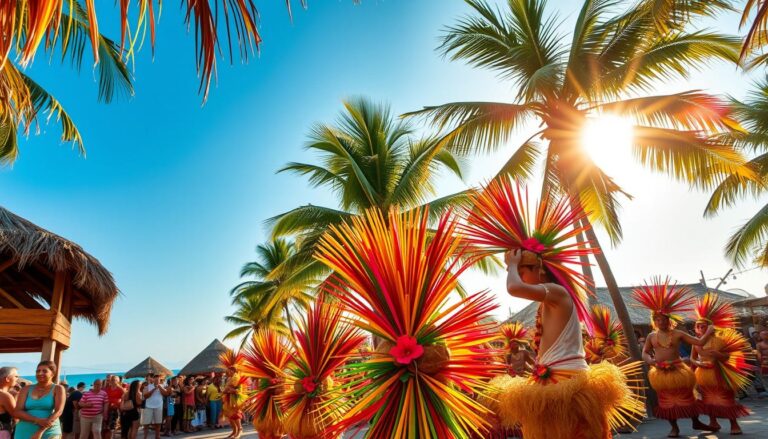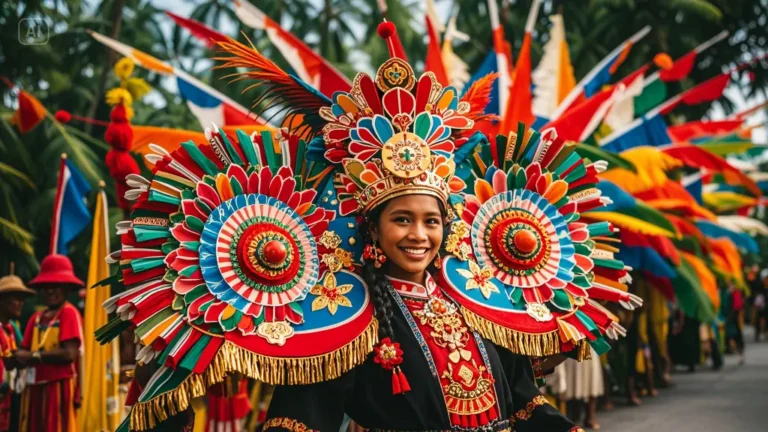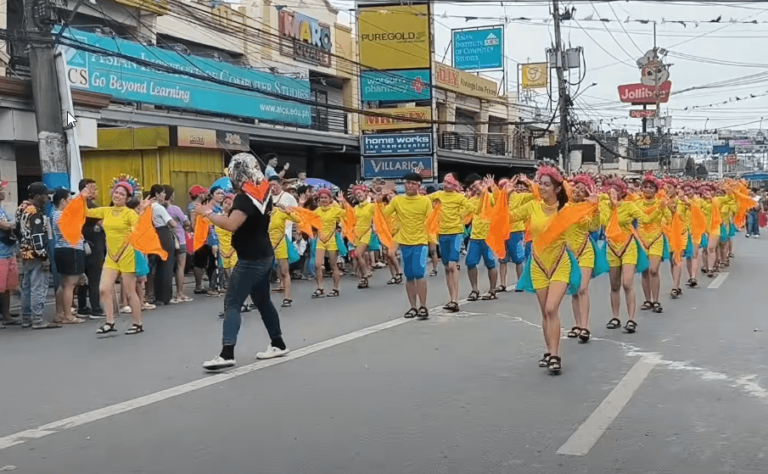Gawagaway Yan Festival: Isabela’s Gawagaway Yan Festival: History & Events
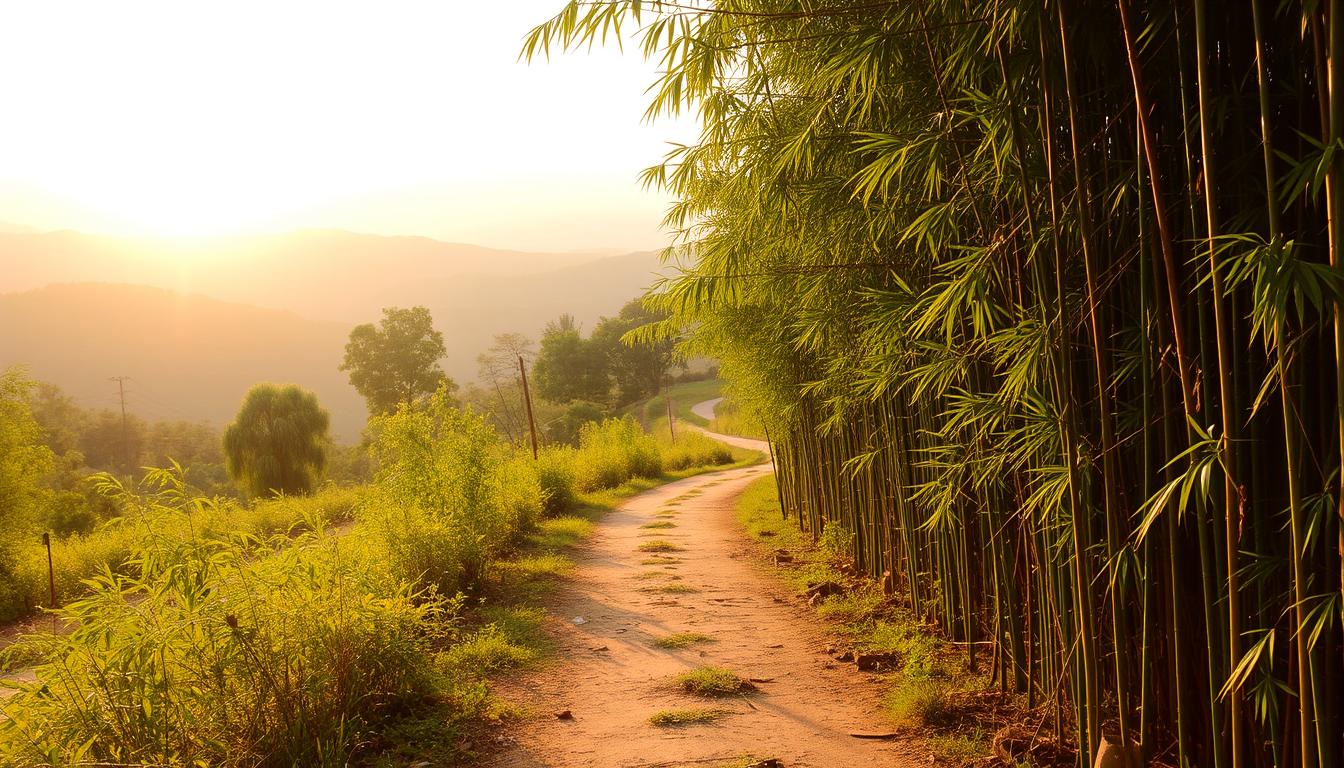
Every March 30, the streets of Cauayan City come alive with vibrant colors and joyful energy. This annual event marks both the area’s cityhood and its rich cultural roots. Locals and visitors gather to honor traditions passed down through generations, blending modern celebrations with timeless customs.
The occasion gained global attention in 2015 when it set a Guinness World Record for the largest parade of motorized tricycles. Over 1,200 decorated vehicles rolled through the streets, showcasing the community’s creativity. This achievement remains a point of pride for residents, reflecting their unity and spirit.
October brings another layer of festivity as the city honors Our Lady of the Pillar, its patroness. Religious processions and family-oriented activities deepen the cultural experience. These dual celebrations highlight how local heritage and civic progress intertwine seamlessly.
From street dances to trade fairs, every activity tells a story of resilience and growth. The event’s name itself comes from a native term meaning “bountiful harvest,” symbolizing gratitude for blessings. As we explore its history, you’ll discover how this gathering became central to Cauayan’s identity.
Key Takeaways
- Celebrates Cauayan’s cityhood anniversary and cultural legacy every March 30
- Holds a Guinness World Record for largest tricycle parade (2015)
- Honors Our Lady of the Pillar with October religious festivities
- Features traditional dances, markets, and community competitions
- Derives its name from indigenous terms meaning abundant harvest
Introduction to the Festival
Each spring, Cauayan City transforms into a vibrant hub of cultural pride and communal joy. This annual gathering marks two milestones: the area’s urban development and its deep-rooted connection to ancestral traditions. Locals describe it as a bridge between generations, where modern achievements meet timeless customs.
The event’s name originates from indigenous terms meaning “abundant harvest,” reflecting gratitude for agricultural blessings and community growth. Activities blend ceremonial practices with lively entertainment, creating a space where farmers, artists, and families share their stories. Key components include:
| Activity | Cultural Significance | Modern Twist |
|---|---|---|
| Street Dancing | Honors Gaddang tribal rituals | Incorporates contemporary music |
| Float Parades | Depicts historical milestones | Features LED lighting designs |
| Trade Exhibits | Showcases local crops | Includes tech startups |
| Artisan Markets | Preserves weaving techniques | Highlights eco-friendly products |
Beyond entertainment, the occasion strengthens community bonds through cooking contests and youth forums. Religious processions honoring Our Lady of the Pillar add spiritual depth, while business fairs highlight economic progress. These layered experiences make the celebration a mirror of Cauayan’s evolving identity.
Visitors often note how seamlessly rice terraces-inspired decor blends with digital art installations. This balance ensures traditions remain relevant to younger audiences. As we explore further sections, you’ll discover how historical events shaped these unique cultural expressions.
Historical Context of Cauayan City and Its Celebrations
Long before becoming Isabela’s agricultural hub, Cauayan’s story began with rivers and resilience. Its foundation lies in strategic choices shaped by nature and colonial ambitions.
Early Beginnings and Founding of Cauayan
The area’s name traces back to bamboo groves (kawayan in Gaddang) that once dominated the Magat River floodplains. Indigenous Atta communities first settled here during the Stone Age, later joined by Gaddang tribes known for rice cultivation. Spanish friar Fr. Antonio del Campo formally established the town on September 8, 1739, recognizing its potential as a farming center.
Early residents faced constant flooding in Calanusian, the original settlement site. This challenge prompted gradual moves to higher ground. By 1741, the Our Lady of the Pillar church became an ecclesiastical mission, anchoring spiritual life amid changing landscapes.
Colonial Influence and the Shift in Settlement
Spanish authorities ordered a major relocation in 1768. The town center moved from Magat’s right bank to the Cagayan River’s left side. This shift served dual purposes: better defense against mountain tribes and tighter colonial control.
New infrastructure like the Tabacalera warehouse emerged, boosting tobacco trade. Strategic roads connected Cauayan to neighboring provinces, cementing its role in regional development. These changes laid groundwork for the city’s modern identity while preserving cultural threads visible in today’s celebrations.
Gawagaway Yan Festival Overview
When March arrives, Cauayan bursts into a kaleidoscope of gratitude and heritage. This annual gathering celebrates two pillars: the city’s urban milestone and ancestral farming traditions. Rooted in Gaddang culture, its name translates to “abundant harvest,” honoring both agricultural success and community spirit.
The event blends ceremonial depth with modern flair. Street dancers in tribal-inspired costumes move to rhythmic beats, while flower-covered floats depict historical scenes. Cooking contests spotlight local crops like cassava and corn, connecting visitors to Isabela’s agricultural roots.
Over 15 days, the city becomes a stage for creativity and unity. Artisans display handwoven textiles beside tech startups at trade exhibits. Religious processions honoring Our Lady of the Pillar weave through neighborhoods, reminding participants of shared values.
Tourism thrives as travelers experience authentic traditions through hands-on workshops and food tours. One visitor remarked, “It’s rare to see history and progress dance together so beautifully.” This balance makes the celebration a must-see while exploring Northern Luzon’s cultural landscape.
From its indigenous beginnings to today’s lively parades, the occasion remains a living tribute to resilience. Upcoming sections will explore how specific elements preserve heritage while fostering growth.
Cultural Significance and Traditions
At the heart of Isabela’s agricultural identity lies a celebration deeply rooted in gratitude and ancestral wisdom. This gathering serves as both a historical archive and a living classroom, where ancient practices meet contemporary aspirations.
Indigenous Roots with the Gaddang People
The event’s name originates from the Gaddang phrase for “overflowing abundance,” reflecting centuries-old farming traditions. Tribal elders share stories through rhythmic dances mimicking planting cycles, their costumes adorned with patterns found on ancient pottery. A local historian notes, “These movements aren’t just art—they’re encoded survival techniques from pre-colonial times.”
Thanksgiving for the Bountiful Harvest
Communal feasts feature heirloom rice varieties grown using traditional terracing methods. Farmers present their first fruits at makeshift altars, blending pre-Christian rituals with Catholic influences. This practice strengthens intergenerational bonds while attracting curious travelers.
| Tradition | Cultural Purpose | Modern Adaptation |
|---|---|---|
| Harvest chants | Honor land spirits | Featured in school curricula |
| Basket weaving | Storage solutions | Eco-market bestsellers |
| Seed exchange | Crop diversity | Agri-tourism activity |
Such customs fuel tourism while preserving ecological knowledge. Visitors often join planting workshops, gaining hands-on understanding of sustainable farming. These experiences showcase how heritage drives the city’s development, creating bridges between past and future celebrations.
Major Festival Activities and Events
The heartbeat of Cauayan quickens each year with events blending tradition and innovation. Crowds gather to experience creative expressions rooted in agricultural heritage, where every corner offers new discoveries.
Rhythmic Movements and Mobile Art
Vibrant street dancers clad in leaf-patterned costumes kick off the celebrations. Their choreography mirrors planting rituals, set to drums and bamboo instruments. Elaborate floats decorated with rice stalks and LED lights follow, competing for titles in craftsmanship.
| Event | Purpose | Key Features |
|---|---|---|
| Street Dancing | Cultural preservation | 500+ performers annually |
| Float Parades | Artistic expression | Recycled material designs |
| Talent Shows | Youth engagement | Multi-genre performances |
Spotlight on Skills and Commerce
Miss Cauayan contestants showcase advocacy projects alongside traditional Q&A rounds. Nearby, pop-up markets display organic sweets and handwoven baskets. “These fairs help my startup reach customers from Manila,” shares a local coffee entrepreneur.
Evening concerts merge folk songs with modern beats, drawing diverse crowds. Through these activities, the celebration strengthens community bonds while boosting economic opportunities for artisans and growers alike.
Historic Parade and Guinness Record Achievement
Cauayan City etched its name in global history books through a spectacular display of community spirit. In 2015, 1,218 decorated motorbikes with sidecars rolled through downtown streets, setting a Guinness World Record. This massive procession transformed everyday transport vehicles into moving art pieces draped in flowers and tribal patterns.
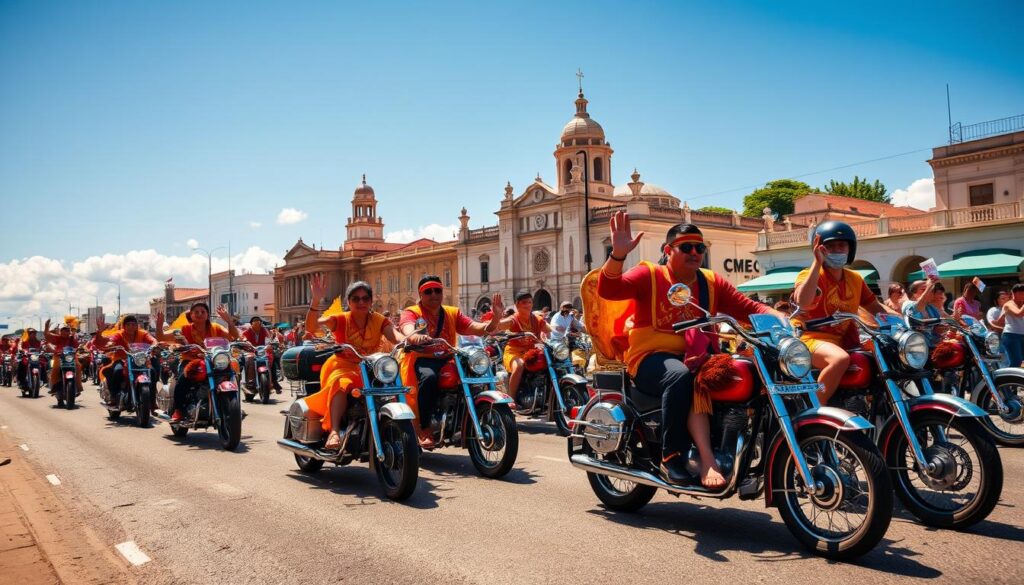
Organizers spent months preparing for the attempt. Each sidecar featured unique designs blending indigenous motifs with modern materials. Local drivers practiced synchronized formations to meet strict Guinness guidelines. “We wanted to show how ordinary people can achieve extraordinary things together,” shared a parade coordinator.
| Aspect | Detail | Impact |
|---|---|---|
| Participants | 1,218 vehicles | Largest recorded assembly |
| Decorations | Native plants & recycled items | Eco-friendly artistry |
| Media Coverage | 23 international outlets | Boosted regional visibility |
| Tourism Growth | 42% increase post-event | Hotels fully booked annually |
The achievement put Cauayan on maps beyond Philippine borders. Travel blogs and news channels featured the colorful procession, sparking curiosity worldwide. Visitors now plan trips around March events, hoping to witness similar spectacles.
This record-breaking moment showcases how traditional celebrations adapt to modern benchmarks. By turning functional vehicles into cultural symbols, the city created a new tourism legacy while honoring its innovative roots.
Cityhood Anniversary and Festival Evolution
A legislative milestone reshaped Cauayan’s identity when Republic Act 9017 took effect on March 30, 2001. This date marks the area’s official transition from agricultural municipality to urban center, now celebrated through vibrant annual traditions.
The Role of March 30 in Celebrations
What began as a simple founding anniversary now blends civic pride with cultural heritage. Early observances featured modest parades and church services. Today, week-long events attract regional attention through:
| Year | Key Development | Community Impact |
|---|---|---|
| 2001 | First cityhood parade | Established annual tradition |
| 2010 | Introduction of trade fairs | Boosted local enterprises |
| 2015 | Guinness record attempt | Global recognition |
| 2023 | Digital art installations | Youth engagement surge |
A city council member notes, “Our celebrations mirror how we’ve grown – honoring roots while embracing progress.” Modern additions like startup showcases now sit alongside traditional rice cake competitions.
This evolution reflects Cauayan’s broader development. The occasion serves as both time capsule and growth engine, preserving history while creating business opportunities. Through strategic partnerships, it has become a platform for local craftsmen and tech innovators alike.
Impact on Tourism and Local Economy
Cauayan City’s annual celebration transforms local commerce through waves of visitors. Hotels report 90% occupancy rates during peak dates, while transport services see triple their usual bookings. Street vendors selling binallay rice cakes and woven crafts double their earnings compared to regular months.

Event partnerships create win-win scenarios for entrepreneurs. Restaurants design special menus using native ingredients, while ride-hailing apps offer discounted routes to parade sites. A bakery owner shares, “Our sales jump 300% when we supply bread for competition participants.”
Trade fairs generate over ₱12 million in transactions annually. Farmers’ cooperatives secure bulk orders from Manila buyers, and tech startups gain investor attention. These activities reinforce the business ecosystem while preserving cultural practices.
The occasion’s popularity elevates Northern Luzon’s profile. Travel agencies now include Cauayan in heritage tours alongside Vigan and Banaue. This exposure attracts infrastructure investments, with new roads improving access to surrounding provinces.
By merging commerce with tradition, the gathering proves cultural events can drive sustainable growth. Its model inspires neighboring towns to develop their own heritage-based development strategies.
Business, Development, and Festival Contributions
Annual celebrations in Isabela’s urban center create ripples beyond cultural displays. The event acts as an economic engine, driving business growth while preserving community identity. Local artisans and farmers gain platforms to showcase goods, from organic rice to handwoven textiles.
City leaders partner with entrepreneurs for pop-up markets during festivities. A bakery owner shares, “Our sales triple when we supply traditional snacks for cooking contests.” These markets attract investors seeking unique products, fostering year-round partnerships.
| Initiative | Business Impact | Community Benefit |
|---|---|---|
| Startup Showcases | ₱8M+ in deals (2023) | Skills training programs |
| Agri-Tours | 15 new farm partnerships | Preserves planting techniques |
| Digital Promotions | 42% online sales increase | Youth tech engagement |
Infrastructure improvements funded by event revenue include upgraded public plazas and Wi-Fi zones. The municipal government allocates 30% of tourism taxes to road repairs near key venues. This strategy enhances visitor access while benefiting daily commuters.
Cultural visibility translates to commercial opportunities. Media coverage of vibrant parades has drawn manufacturing firms to the area. One company representative notes, “We saw the city’s potential through their creative event planning.”
Through these efforts, the celebration proves traditions can fuel modern progress. Both cultural guardians and entrepreneurs find common ground in driving sustainable growth.
Comparing Gawagaway Yan Festival with Other Local Festivals
Northern Luzon’s festivals reveal how communities express identity through local resources. While events like Ilagan’s Binallay Festival focus on rice cake artistry, Cauayan’s gathering stands out through its dual urban-rural narrative.
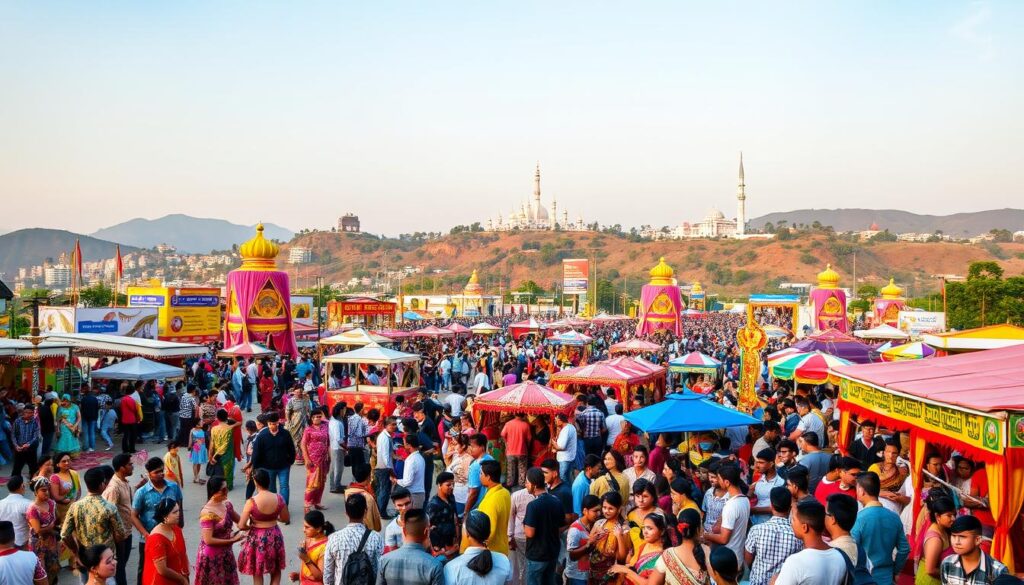
Shared Foundations, Distinct Expressions
Three key aspects unite these celebrations:
- Agricultural roots shaping event themes
- Community-led organization models
- Integration of spiritual traditions
Echague’s Balatong Festival highlights mung bean cultivation through cooking contests. In contrast, Cauayan’s record-breaking parades showcase technological adaptability alongside farming heritage. “Our way of honoring progress differs, but the core remains gratitude,” notes a Isabela tourism officer.
| Festival | Unique Feature | Economic Impact |
|---|---|---|
| Gawagaway Yan | Guinness World Record event | ₱12M+ trade deals |
| Binallay | Rice cake artistry | ₱3M annual sales |
| Balatong | Legume-based cuisine | 20% farm income boost |
Business opportunities emerge differently across events. While Palanan’s Sabutan Festival markets woven crafts, Cauayan attracts tech investors through startup showcases. This blend of tradition and innovation creates distinct pathways for community development while maintaining cultural authenticity.
Diverse Festival Activities: A Closer Look
Cauayan’s streets transform into a stage where creativity meets tradition through dozens of interactive events. From sunrise yoga sessions to evening art installations, every activity invites participation across generations. A local teacher remarks, “You’ll find toddlers dancing alongside grandparents here – that’s our secret sauce.”
Morning starts with community sports like bamboo bike races and riverbank zumba. Afternoons buzz with cooking battles using native ingredients like kabog millet and dried fish. Teenagers dominate skateboard competitions while artisans demonstrate century-old weaving techniques nearby.
| Activity Type | Age Group | Cultural Connection |
|---|---|---|
| Pet costume contests | All ages | Highlights animal care traditions |
| Agri-tech workshops | Adults | Modern farming methods |
| Storytelling circles | Children | Folktale preservation |
| LED float building | Teens & adults | Tech meets craftsmanship |
Evenings shift to talent showcases where singers blend folk melodies with pop beats. Food stalls serving sinudlot cassava cakes stay open late, creating spaces for spontaneous conversations. This mix ensures visitors experience both ancestral practices and contemporary innovations within hours.
Through these layered events, the celebration becomes a living mosaic of community values. Farmers share harvest stories with startup founders, while artists collaborate with engineers on parade floats. Such interactions strengthen bonds across social groups, making cultural preservation a team effort.
Inclusive Celebrations: Blending Indigenous and Modern Influences
Cauayan’s streets become a cultural mosaic each year as ancestral rhythms meet digital beats. This gathering thrives through collaborations between tribal elders and tech-savvy youth, creating spaces where heritage evolves organically.

Unity Through Shared Stages
Gaddang warriors perform harvest rituals beside K-pop dance crews, their movements separated by centuries yet united in purpose. “We’re rewriting history through collaboration,” shares a Ilocano choreographer. Over 14 ethno-linguistic groups contribute, from Ifugao woodcarvers to Tagalog spoken-word artists.
Community projects bridge generations through hands-on workshops. Elders teach basket weaving using wild vines while startups demo AR apps that map ancient trade routes. Teenagers remix folk songs into electronic tracks, playing them at open-air concerts.
Key fusion elements include:
- Bamboo instrument ensembles paired with DJ sets
- Henna tattoo stalls offering digital pattern scans
- Farm-to-table dinners served in biodegradable VR headsets
This approach turns cultural exchange into collective growth. Visitors taste heirloom rice cakes while discussing renewable energy solutions with local engineers. Such interactions prove traditions can thrive alongside innovation when communities embrace inclusive creativity.
How to Reach Cauayan City, Isabela
Travelers find multiple routes to Isabela’s thriving urban center. Whether by air or road, the journey offers glimpses of Northern Luzon’s scenic landscapes. Modern infrastructure ensures smooth transit for both local and international visitors.
Air travel provides the fastest option. Cebu Pacific operates daily 65-minute flights from Manila to Cauayan Airport. Departures occur at 9:30 AM, with return flights leaving by 11:25 AM. Sky Pasada offers additional regional connections for nearby destinations.
Road trippers enjoy 7-8 hour bus rides from Metro Manila. Victory Liner and Partas run deluxe coaches with reclining seats and Wi-Fi. Buses depart hourly from Pasay and Cubao terminals. “Night trips let travelers sleep through the journey,” advises a frequent commuter.
| Option | Duration | Operator | Contact |
|---|---|---|---|
| Flight | 1h 5m | Cebu Pacific | cebupacificair.com |
| Bus | 7-8h | Victory Liner | (02) 727 4688 |
Upon arrival, tricycles and jeepneys shuttle visitors to hotels and event venues. Ride-hailing apps like JoyRide operate in the city center. For schedules and bookings, contact:
- Cauayan City Tourism Office: (078) 652 2205
- Official website: cityofcauayan.gov.ph
With these accessible options, planning a trip becomes effortless. The city’s compact layout ensures key attractions remain minutes apart, making exploration convenient for all.
Community and Government Collaborations
Collaborative efforts form the backbone of Cauayan City’s annual cultural showcase. Local authorities and residents work side by side to balance logistical needs with authentic traditions. The city government handles permits and infrastructure, while community groups curate performances and artisan displays. Shared decision-making ensures events reflect both historical values and modern aspirations.

A telecom company’s sponsorship of the main stage exemplifies public-private partnerships. This alliance allows for professional lighting and sound systems, elevating production quality. “Businesses gain visibility while preserving our heritage,” notes a city tourism officer. Similar collaborations fund street decorations and competition prizes.
| Stakeholder | Role | Contribution |
|---|---|---|
| City Government | Coordination | Security, venue permits |
| Business Groups | Sponsorship | Funding, equipment |
| Cultural Organizations | Content Creation | Dance workshops |
| Residents | Participation | Volunteer staffing |
Joint efforts extend to knowledge-sharing initiatives. Farmers demonstrate planting techniques at agri-tourism booths, while tech startups host digital marketing seminars. These exchanges foster economic opportunities and skill development across generations.
By blending resources and expertise, the celebration becomes a model for sustainable cultural preservation. Annual planning committees report higher volunteer sign-ups each year, proving collective action strengthens community bonds.
Future Prospects for the Gawagaway Yan Festival
Innovation and tradition will dance together in Cauayan’s coming years. Organizers plan to blend augmented reality with ancestral rituals, creating immersive experiences for tech-savvy visitors. Youth groups propose holographic projections of tribal elders sharing creation stories during street parades.
Evolution of Traditions Over Time
Planned upgrades honor roots while embracing progress. Farmers may demonstrate planting techniques via livestream, connecting with urban audiences. A city planner states, “We’re designing interactive museum exhibits that respond to traditional dance movements.”
| Upcoming Features | Traditional Elements | Target Audience |
|---|---|---|
| Drone light shows | Bamboo orchestras | Young families |
| Eco-art competitions | Handwoven textiles | Art students |
| AI-guided heritage tours | Oral histories | International tourists |
Anticipated Attractions and Expanding Activities
New partnerships with tech firms could introduce app-based scavenger hunts through historical sites. Culinary events might feature 3D-printed molds for traditional rice cakes. These innovations aim to boost visitor numbers by 40% within five years.
Local schools will host coding workshops for creating digital art installations. Such efforts ensure cultural practices remain relevant. Community surveys reveal strong support for nighttime river cruises featuring projection-mapped legends.
Sponsorships from national brands could fund larger parade floats and scholarships for artisan trainees. This balanced approach protects heritage while driving economic growth through creative industries.
Conclusion
Cauayan City’s annual celebration leaves a lasting imprint through its fusion of history and innovation. Rooted in agricultural gratitude, the event honors ancestral wisdom while embracing modern achievements like the 2015 tricycle parade record. Street dances and artisan markets showcase evolving traditions that connect generations.
The gathering drives community development through business partnerships and tech integrations. Local enterprises thrive during trade fairs, while smart city initiatives attract national attention. Visitors witness how spiritual processions coexist with digital art displays, creating a blueprint for cultural sustainability.
Looking ahead, planners aim to enhance interactive experiences through augmented reality tours and eco-friendly showcases. These efforts ensure traditions remain vibrant for future participants. The occasion proves cultural preservation can fuel economic growth without losing authenticity.
Travelers seeking authentic Northern Luzon culture will find warmth in Cauayan’s creative spirit. From handwoven textiles to startup innovations, every detail tells a story of resilience. Such celebrations remind us that honoring heritage strengthens communities while shaping tomorrow.

